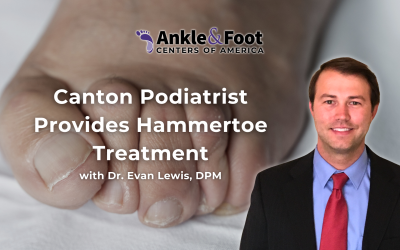Haglund’s deformity and heel spurs often cause significant discomfort and pain. These conditions affect many people, making daily activities challenging. Understanding their symptoms, causes, and treatments is crucial. In this article, we will explore these foot issues in detail. First, we will discuss what heel spurs are. Then, we’ll look into what causes them and how to treat them. By the end, you’ll have a clear understanding and practical tips to manage your foot health better.
Table of Contents
What Are Heel Spurs?
 Heel spurs are bony growths that develop on the underside of the heel bone. These growths often form due to prolonged strain on foot muscles and ligaments. Typically, heel spurs are associated with plantar fasciitis, a condition involving inflammation of the plantar fascia—a thick band of tissue running across the bottom of the foot.
Heel spurs are bony growths that develop on the underside of the heel bone. These growths often form due to prolonged strain on foot muscles and ligaments. Typically, heel spurs are associated with plantar fasciitis, a condition involving inflammation of the plantar fascia—a thick band of tissue running across the bottom of the foot.
Common symptoms include sharp pain in the heel, especially when standing up in the morning or after long periods of rest. Heel spurs can make walking and other activities difficult.
Although they might sound alarming, heel spurs are relatively common and treatable. Understanding what they are is the first step toward effective management and relief.
What Causes Heel Spurs?
Several factors contribute to this condition:
- Excessive Physical Activity: Running, jumping, and other high-impact activities can strain the heel and arch.
- Improper Footwear: Wearing shoes that lack proper support can lead to heel spurs.
- Obesity: Extra weight puts additional pressure on the feet, increasing the risk of heel spurs.
- Age: As we age, our plantar fascia can lose elasticity, leading to heel spurs.
- Foot Structure: Flat feet or high arches can cause abnormal strain on the heel.
- Medical Conditions: Conditions like diabetes or arthritis can contribute to the formation of heel spurs.
What Is Haglund’s Deformity?
 Haglund’s deformity, also known as “pump bump,” is a bony enlargement on the back of the heel. This condition occurs when the bony part of the heel rubs against shoes, leading to irritation and inflammation.
Haglund’s deformity, also known as “pump bump,” is a bony enlargement on the back of the heel. This condition occurs when the bony part of the heel rubs against shoes, leading to irritation and inflammation.
Key characteristics of Haglund’s deformity include:
- Bump on the Back of the Heel: A noticeable, painful bump where the Achilles tendon attaches to the heel.
- Swelling and Redness: The area around the bump often becomes swollen and red due to constant irritation.
- Pain: Pain is typically worse when wearing shoes with rigid backs, such as pumps or dress shoes.
Haglund’s deformity can be caused by:
- Tight or Improper Footwear: Shoes with a rigid back can irritate the heel bone.
- Foot Structure: High arches or tight Achilles tendons can increase the risk.
- Genetics: A family history of the condition can make one more susceptible.
Addressing Haglund’s deformity early can help manage symptoms and prevent further complications.
What to Do for Heel Spurs
Getting rid of heel spurs requires a combination of treatments and lifestyle adjustments. Here are effective strategies:
- Consult a Podiatrist: Seek professional advice for an accurate diagnosis and personalized treatment plan.
- Rest and Ice: Rest your feet and apply ice packs for 15-20 minutes several times a day to reduce inflammation.
- Proper Footwear: Wear shoes with adequate arch support and cushioning. Avoid high heels and shoes with rigid backs.
- Orthotic Inserts: Use custom orthotics or heel pads to provide support and alleviate pressure on the heel.
- Stretching Exercises: Perform daily stretching exercises for the Achilles tendon and plantar fascia to improve flexibility.
- Anti-Inflammatory Medications: Take over-the-counter anti-inflammatory medications like ibuprofen or naproxen to reduce pain and inflammation.
- Weight Management: Maintain a healthy weight to decrease the stress on your feet and prevent further strain.
- Physical Therapy: Engage in physical therapy for specialized exercises and treatments that promote healing.
- Night Splints: Use night splints to keep your foot in a stretched position while you sleep, aiding in the healing process.
- Shock Wave Therapy: Consider extracorporeal shock wave therapy (ESWT), which uses high-energy sound waves to stimulate healing.
- Corticosteroid Injections: In severe cases, a doctor may recommend corticosteroid injections to reduce inflammation and pain.
- Surgery: If conservative treatments fail, surgical removal of the heel spur may be necessary. This is usually considered a last resort.
By following these steps, you can effectively get rid of heel spurs and improve your foot health. Always consult with a healthcare professional for the best course of action tailored to your specific condition.
Haglund’s Deformity Treatment
 Treating Haglund’s deformity involves reducing pain and inflammation and preventing further irritation. Here are effective treatment options:
Treating Haglund’s deformity involves reducing pain and inflammation and preventing further irritation. Here are effective treatment options:
- Proper Footwear: Wear shoes with a soft back or open heel to reduce pressure on the affected area. Avoid high heels and rigid-backed shoes.
- Heel Pads and Orthotics: Use cushioned heel pads or custom orthotics to provide extra support and relieve pressure on the heel.
- Ice Therapy: Apply ice packs to the inflamed area for 15-20 minutes several times a day to reduce swelling and pain.
- Anti-Inflammatory Medications: Over-the-counter medications like ibuprofen or naproxen can help reduce inflammation and pain.
- Physical Therapy: Engage in physical therapy to strengthen the foot muscles and improve flexibility, which can help alleviate symptoms.
- Stretching Exercises: Perform daily stretching exercises for the Achilles tendon and calf muscles to reduce tension on the heel.
- Heel Lifts: Use heel lifts in your shoes to reduce strain on the Achilles tendon and alleviate pressure on the heel.
- Avoid Prolonged Standing: Limit standing or walking for long periods, especially on hard surfaces. Take breaks to rest and elevate your feet.
- Corticosteroid Injections: In some cases, a doctor may recommend corticosteroid injections to reduce inflammation and pain.
- Shock Wave Therapy: Consider extracorporeal shock wave therapy (ESWT) to stimulate healing and reduce pain.
- Surgery: If conservative treatments fail, surgical intervention may be necessary to remove the bony enlargement and relieve pressure on the Achilles tendon. Surgery is usually considered a last resort.
Consult with a healthcare professional to determine the best treatment plan for your specific condition.

Conclusion
 Dealing with Haglund’s deformity and heel spurs can be challenging, but understanding their causes and treatments makes a significant difference. By recognizing the symptoms early and taking proactive steps, you can manage these conditions effectively. Remember to wear proper footwear, use orthotic devices, and perform regular stretching exercises to maintain foot health. If symptoms persist, consult a healthcare professional for personalized advice and treatment options. Ultimately, prioritizing your foot health can lead to a more comfortable and active lifestyle. Therefore, step forward into better foot health and find relief from Haglund’s deformity and heel spurs.
Dealing with Haglund’s deformity and heel spurs can be challenging, but understanding their causes and treatments makes a significant difference. By recognizing the symptoms early and taking proactive steps, you can manage these conditions effectively. Remember to wear proper footwear, use orthotic devices, and perform regular stretching exercises to maintain foot health. If symptoms persist, consult a healthcare professional for personalized advice and treatment options. Ultimately, prioritizing your foot health can lead to a more comfortable and active lifestyle. Therefore, step forward into better foot health and find relief from Haglund’s deformity and heel spurs.
For expert care and tailored treatment, schedule an appointment with Ankle & Foot Centers of America. Our specialists are here to help you achieve optimal foot health and find lasting relief.
Don’t wait—take the first step towards a pain-free life today!






